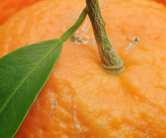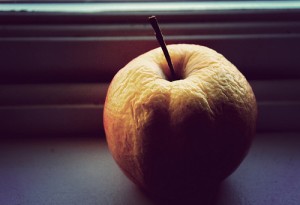Remember that movie ‘I, Robot’ (2004) with Will Smith? He plays a cop in the near future who loses one of his arms in an accident and gets it replaced with a fully integrated robotic arm. By “fully integrated” I mean it has full range of motion of a normal arm and Will Smith can operate just by thought.
While this certainly is the work of science fiction, you may be surprised to know how close science is to actually achieving this kind of technology.
Back in 2008, a team of scientists from the University of Pittsburgh implanted micro-electrodes into a monkey’s brain that enabled it to move a rudimentary robotic arm. Two years later, the same group of scientists improved the technology as they were able to get the monkey to operate a more complex robotic arm just using its thoughts. Watch the video below.

These scientists are not the only ones to pioneer this sort of technology. In 2009, Toyota had developed a wheelchair that could operate based on the user’s “thoughts”. This technology did not require any implants, but instead worked by picking up brain signals from the user (they had to wear a special cap) and transmitting those to a computer which controlled the wheelchair. This technology seemed to be limited to the most basic commands; left, right, forward and back. The emergency stop command was actually puffing out one of your cheeks in case the wheelchair went out of control.

So where does the technology sit today? Interestingly enough, the Defense Advanced Research Projects Agency (DARPA) had been funding scientists to develop a super complex prosthetic limb for a few years now. It’s one of the most complex ones to date capable of all kinds of fine motor control.
Much like the research from University of Pittsburgh, this arm relies upon implants in the brain to be fully integrated. The latest news is that the technology is about to begin its first round of human trials!
Considering the implications of this technology, there’s good and bad sides to it. For example; on the good side we may be able to turn Stephen Hawking into a cyborg. That side of the technology is both cool and good news for people who have suffered accidents or were born with the inability to use their bodies fully.
On the scarier side, this technology could be used to “replace” healthy limbs with stronger, more durable ones. Why else would the military be funding the research? Cyborgs may be just around the corner. Universal Soldier anyone?
Interested in reading more?
The monkey: http://www.switched.com/2010/06 /04/monkey-mind-control-evolves-with-elaborate-new-robotic-arm/
The Toyota wheelchair: http://www.switched.com/2009/06 /29/toyota-developing-a-mind-controlled-wheelchair/)
The DARPA arm: http://www.wired.com/dangerroom/ 2010/07/human-trials-ahead-for-darpas-mind-controlled-artificial-arm/








 anti-cancer effects, Chen decided to study strawberries as a cancer preventive in humans. Her
anti-cancer effects, Chen decided to study strawberries as a cancer preventive in humans. Her 